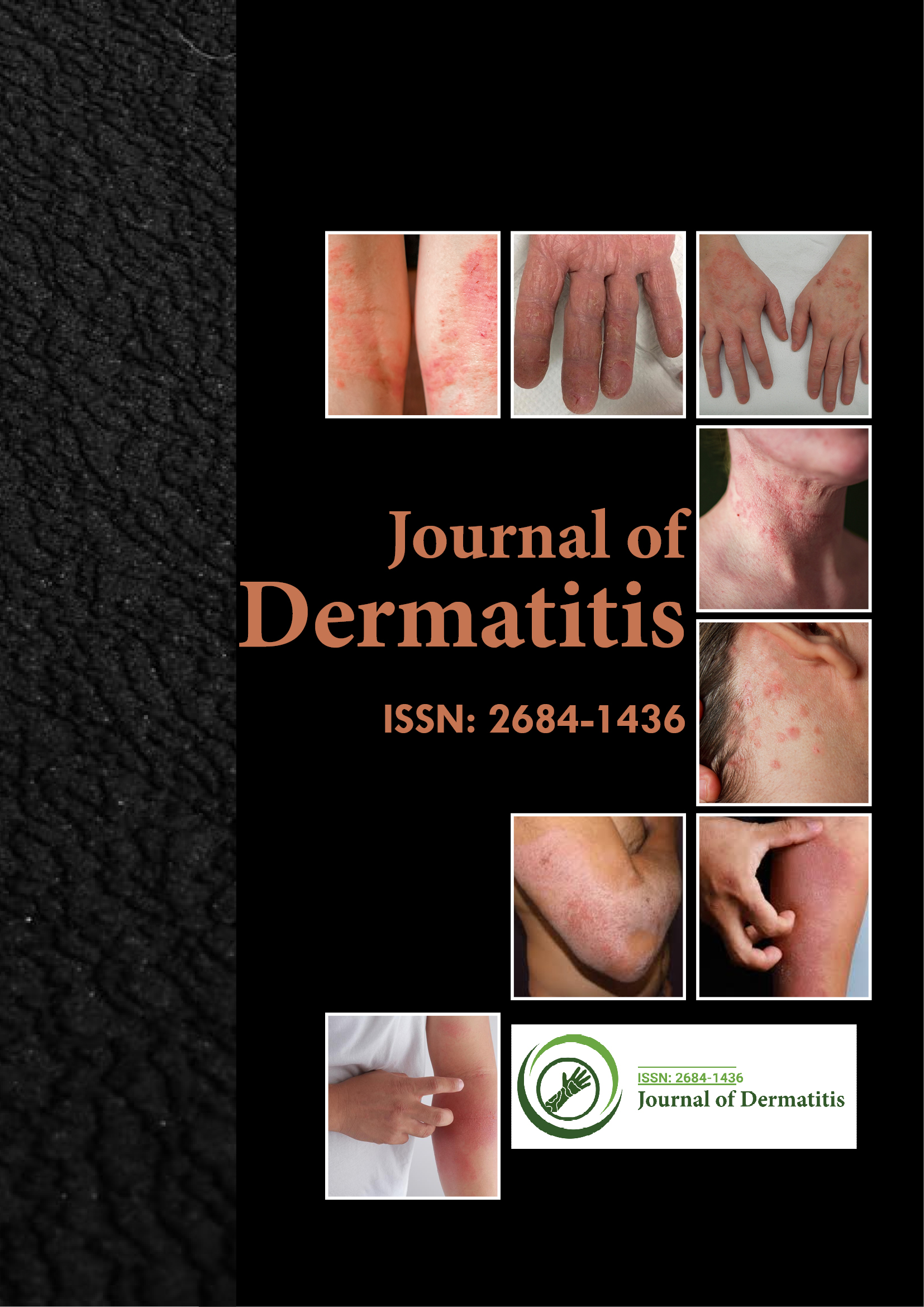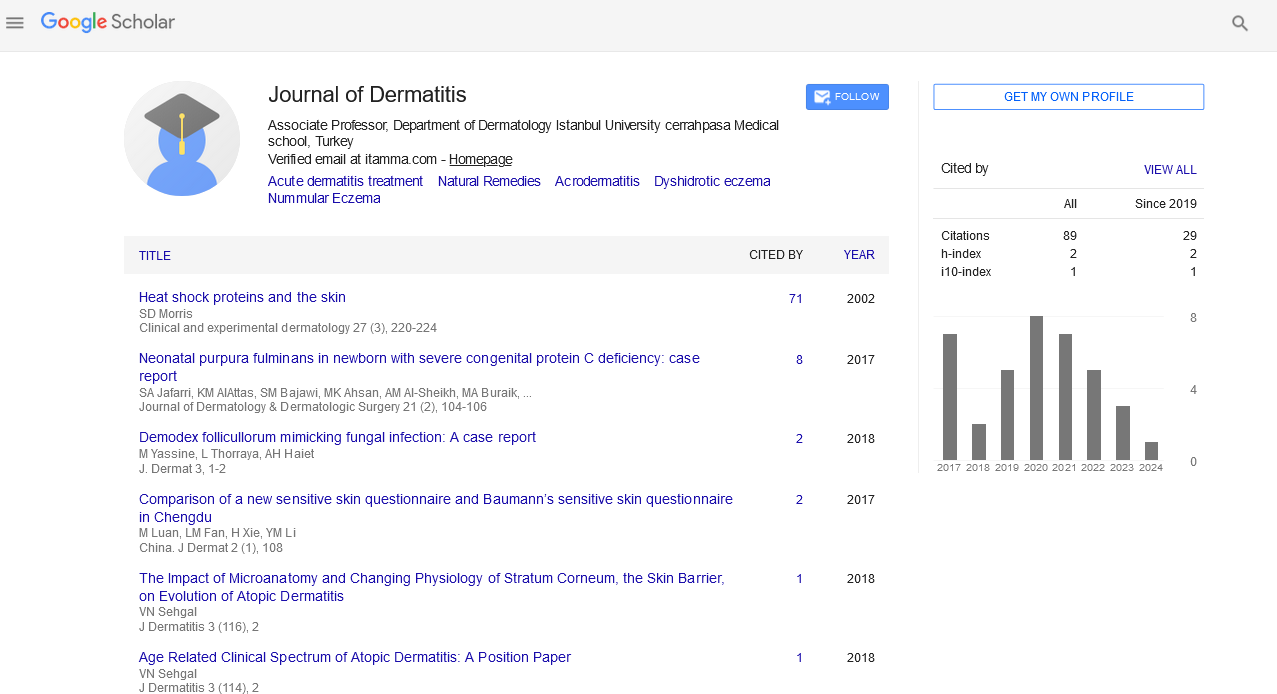Indexed In
- RefSeek
- Hamdard University
- EBSCO A-Z
- Euro Pub
- Google Scholar
Useful Links
Share This Page
Journal Flyer

Open Access Journals
- Agri and Aquaculture
- Biochemistry
- Bioinformatics & Systems Biology
- Business & Management
- Chemistry
- Clinical Sciences
- Engineering
- Food & Nutrition
- General Science
- Genetics & Molecular Biology
- Immunology & Microbiology
- Medical Sciences
- Neuroscience & Psychology
- Nursing & Health Care
- Pharmaceutical Sciences
Commentary - (2022) Volume 7, Issue 2
Signs and Symptoms of Acrodermatitis Enteropathica
Jenny Yassine*Received: 01-Mar-2022, Manuscript No. JOD-22-16439; Editor assigned: 04-Mar-2022, Pre QC No. JOD-22-16439; Reviewed: 17-Mar-2022, QC No. JOD-22-16439; Revised: 24-Mar-2022, Manuscript No. JOD-22-16439; Published: 31-Mar-2022, DOI: 10.35248/2684.1436.22.7.150
Description
Acrodermatitis Enteropathica (AE) is a zinc metabolism disorder that can take one of three forms: inborn (congenital), acquired, or both. The inborn form of AE is an uncommon hereditary illness marked by intestinal anomalies that prevent the colon from absorbing zinc. Skin inflammation with pimples (pustular dermatitis) around the mouth and/or anus, diarrhoea, and irregular nails are all symptoms of zinc deficiency (nail dystrophy). Irritability and emotional problems are visible in the acute phase due to brain cortical wasting (atrophy). It is critical to recognise and treat this condition.
Synonyms of acrodermatitis enteropathica
• AE
• Brandt syndrome
• Danbolt-Cross syndrome
• Zinc deficiency, congenital
Similar symptoms are present in the acquired version of this illness. One temporary variant is caused by the mother's failure to produce zinc into her breast milk. Other types of acquired AE can occur as a result of surgery to bypass part of the upper intestine or from special intravenous nutritional programmes that lack the proper quantity of zinc.
Signs and symptoms
Chronic diarrhoea, which can be mild or severe, and the presence of fatty substances in the stools are symptoms of acrodermatitis enteropathica (steatorrhea). Symptoms in the congenital form appear gradually, usually around the time of an infant's weaning. The skin around mouth, nose, and eyes, as well as the skin on elbows, knees, hands, and feet, becomes inflamed. The skin lesions are typically blistered (vesicobullous) and dry out to look like psoriasis. Because of starved tissue, the skin around the nails may be irritated, and the nail may be aberrant. Total hair loss on the scalp, eyelids, and brows is possible (alopecia). Conjunctivitis (inflammation of the membrane that lines the eyelid) is common.
People with the congenital type of this condition have unusually low blood zinc levels, while normal blood zinc levels have been seen on rare occasions.
A different type of transitory zinc shortage in infants can be caused by a congenital defect that affects the mother rather than the child. A zinc-binding factor generated by the pancreas and found in human milk may be missing in some nursing women. Because the milk is weak in the zinc-binding factor, breast-fed newborns of these women may acquire reduced blood zinc levels along with other indications of this condition. The zinc shortage is corrected and the newborn is cured after an alternative source of oral zinc is added into the infant's diet (for example, formula milk).
All patients with acrodermatitis enteropathica can live normal lives with treatment.
Long remissions are common, and they usually begin during puberty. However, in rare situations, women may experience a return of the illness while pregnant, necessitating greater zinc treatment.
Causes
Acrodermatitis enteropathica congenital is inherited as an autosomal recessive genetic condition. Mutations in the SLC39A4 gene appear to be the cause.
A combination of genes for a certain trait on the chromosomes obtained from the father and mother determine genetic illnesses.
A few faulty genes are found in everyone. Close relatives (consanguineous) have a larger likelihood of carrying the same faulty gene than unrelated parents, increasing the risk of having children with a recessive genetic condition.
Some women don't produce enough zinc in their breast milk, which can be due to a hereditary factor. Breast milk zinc levels can be reduced by a single mutation in the SLC30A2 gene. This propensity does not require two gene defects; one is enough, and people who have it have a 50% chance of passing it down to their children.
Citation: Yassine J (2022) Signs and Symptoms of Acrodermatitis Enteropathica. J Dermatitis.7:150
Copyright: © 2022 Yassine J. This is an open-access article distributed under the terms of the creative commons attribution license which permits unrestricted use, distribution and reproduction in any medium, provided the original author and source are credited.

